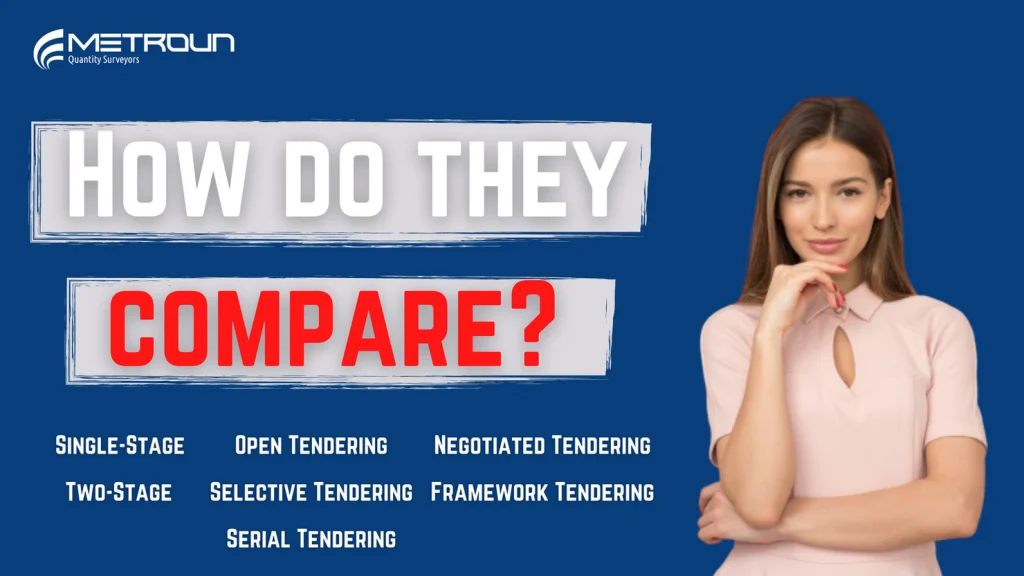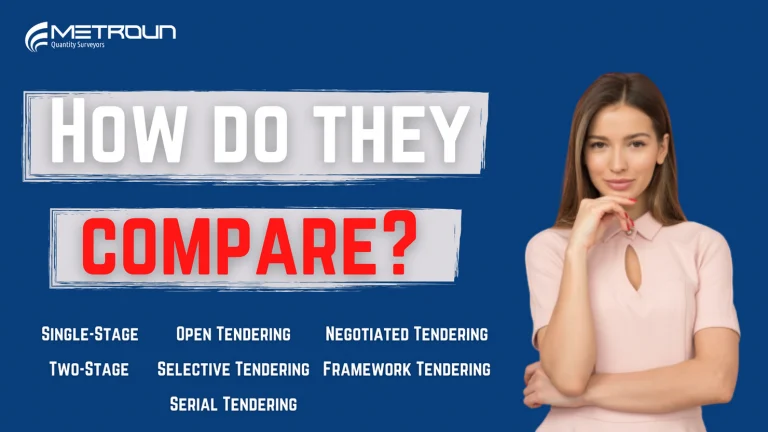As a Quantity Surveyor, we have a duty to provide value for money to our employer. This is done at all stages of the project life cycle, from tendering works to negotiating final accounts. In this article we’re going to look specifically at the different tender options available. Helping you establish the most suitable option for the project you’re working on.

It’s easy for us to assume that there’s a one size fits all solution to how construction projects are managed. However, often this isn’t the case, especially when it comes to tendering. We have to consider many variables which impact how we tender the works. For example, what isthe time-frame? Are the works specialised? Are works under a fixed-term framework? Has the design been carried out? Or is the design yet to be completed? There’s going to be a differenttender option for each of these variables. So let’s dive into the different options available.
Open Tendering
Under this option, anyone can apply to tender for the works. This is often through an advert orthird party. This option provides a large pool of potential suppliers to choose from. This can either be seen as a benefit or disadvantage as much time is spent vetting returned tenders. However, contrary to this, it may give an opportunity to a suitable supplier who’d otherwise miss out on the other tender options.
Selective Tendering
This is where a selection of contractors will be invited to tender for certain works. This removes the vetting process normally required after tenders are received. There is certainty of the contractors competency at invitation to tender and this saves time and resource when evaluating the returned prices. This option is especially useful when the works are specialist or there are certain expectations from the client that few contractors can guarantee.
Negotiated Tendering
Under this option a single supplier is invited to tender and negotiated on price. This is often used when the works being carried out is specialist. It should be noted, although this option reduces the time spent during the tendering process, the competitive aspect of the process isremoved therefore risking reduced value for money.
Serial Tendering
Under this option a blank schedule of rates is submitted as part of the tender documents. The contractors return their tenders with the rates filled in. Tenders are then assessed based on the rates provided. This is useful for agreements where multiple similar projects are being carried out. The contractor will price their works for the projects based on the rates agreed at tender. Contractors are often inclined to submit lower rates to secure contracts and therefore increase value for money to the employer.
Framework Tendering
Under this arrangement potential suppliers have an agreed overarching contract which lasts acertain amount of time. During this time-frame, a client may wish to utilise their services for specific projects which they will procure under a call-off contract. The advantage to this is thattime is saved during the procurement process for each project. For example, let’s say you work for a client who is responsible for maintaining the highways in a region for the next 5 years. During this time there’s likely to be many projects encompassing the different elementsof maintaining the assets. Rather than going through a full tender process for each smaller project, under this agreement you can call on selected suppliers under the framework agreement to carry out the work. Sometimes, suppliers under the framework may even be required to submit competitive prices to win projects over other framework contractors.
Single-Stage and Two-Stage Tendering
Single stage is used when all the information is readily available for contractors to provide a robust price for carrying out works. This differs from two-stage where information may be incomplete at tender stage. Contractors would submit an initial price at the first stage, allowing work to begin and then a fixed price is negotiated later on. The latter method allows for early contractor involvement which contains its own cost-saving benefits.
Why not check out our video on this subject?










